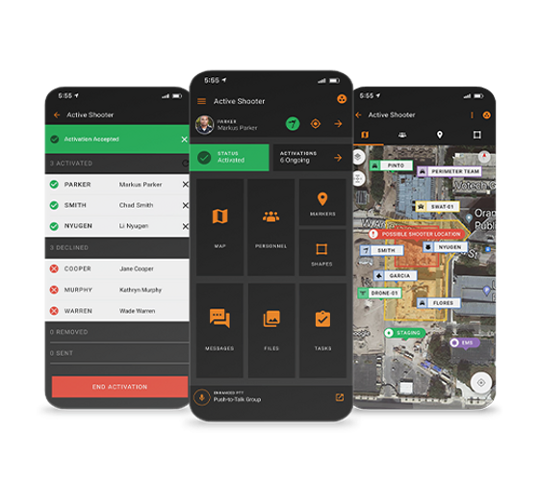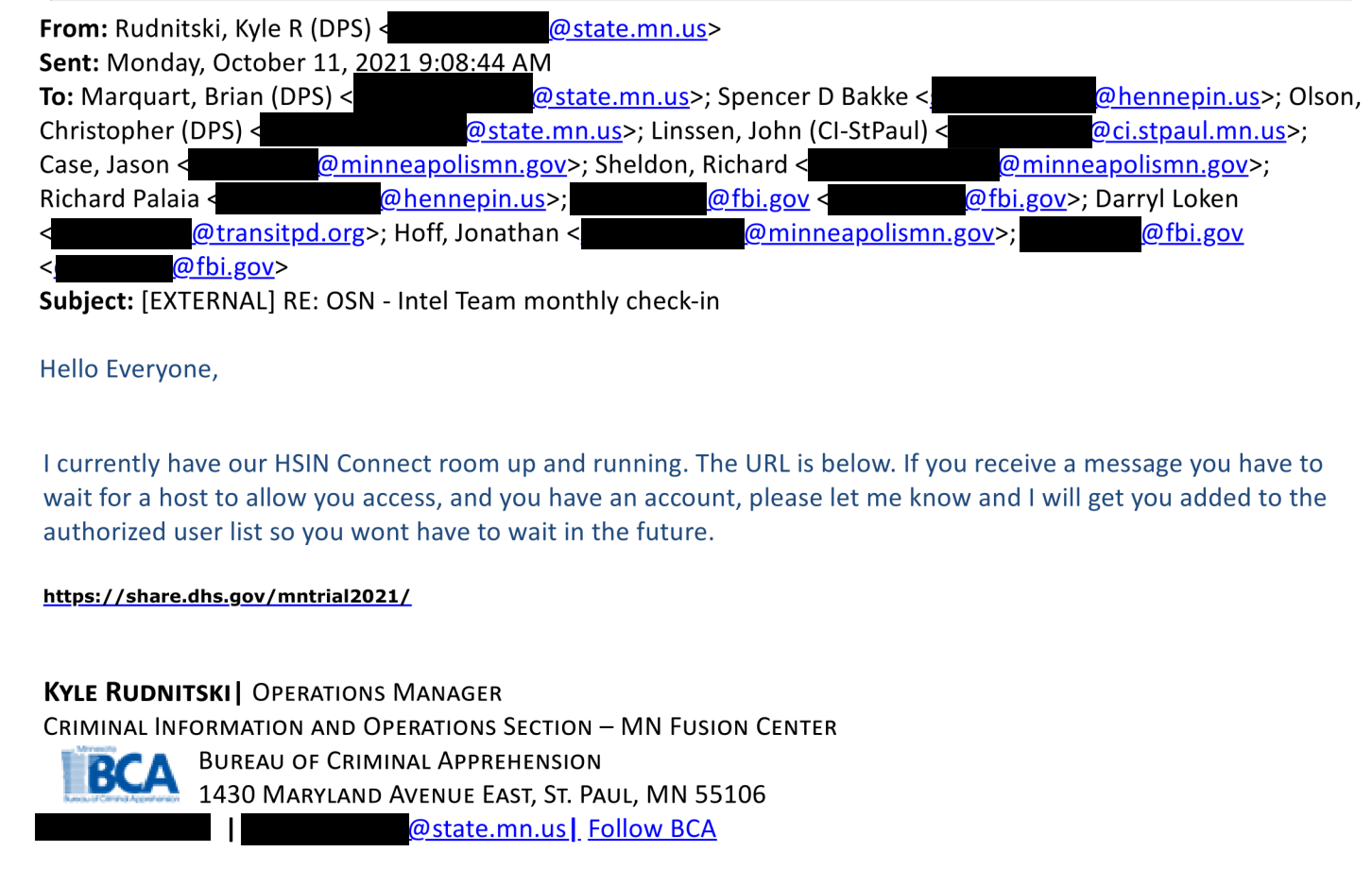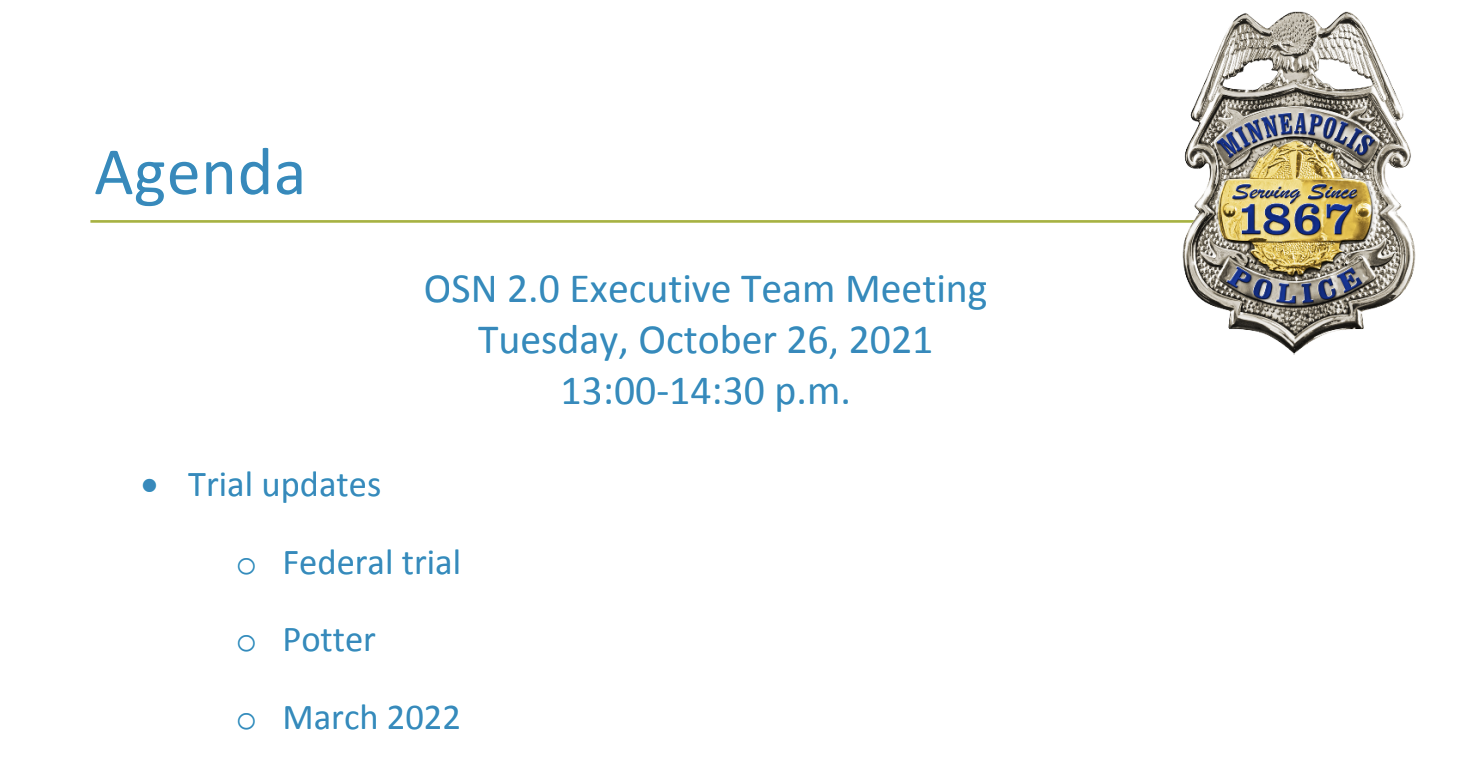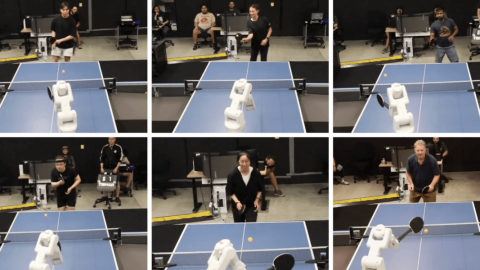The next day, school was canceled. In response to the chaos of the previous night, the Brooklyn Center City Council hurried to pass a resolution banning aggressive police tactics such as rubber bullets, tear gas, and “kettling,” in which groups of protesters are blocked into a confined space. A curfew was also put into effect from 7 p.m. to 6 a.m. The council’s resolution went into effect by nightfall on the 12th, but police continued using the banned tactics and munitions. That night, approximately 20 businesses in the area were broken into.
As part of the operation, Minneapolis Police also summoned helicopters from Customs and Border Protection (part of the US Department of Homeland Security). The presence of circling aircraft would become a hallmark of Operation Safety Net. During the peak of the protests, the helicopters came and went from a difficult-to-access industrial area near the Mississippi River between Brooklyn Center and Minneapolis, flying at high altitudes to avoid detection.
On at least two nights during the height of the protests, which spanned nearly 10 days, law enforcement briefly detained and took detailed photographs of credentialed members of the press who were covering the events.
The ACLU, along with pro bono lawyers from private law firms Fredrikson & Byron P.A. and Apollo Law, recently settled a class action lawsuit against the city over its treatment of journalists during the protests. The settlement requires the city to pay over $800,000 to injured journalists, and a federal judge ordered an injunction lasting six years that prohibits Minnesota policing agencies from attacking and arresting journalists, or ordering them to disperse from the scene of a protest.
On April 15, more than 75 community organizations, including the ACLU, issued a joint statement calling for the state to end OSN. “The state’s use of force against Minnesotans exercising their First Amendment rights in Brooklyn Center and militarization of our cities in response to police violence is wrong, traumatizing, and adding to the public health crisis of COVID, police brutality, and systemic racism,” the statement read. It called out the “continued use of militaristic tools of oppression to intimidate and halt peaceful, if justifiably angry, protest.” The NAACP also called for a stop to Operation Safety Net via Twitter.
The Minneapolis Legislative Delegation, a group of state legislators, sent a letter to Minnesota governor Tim Walz condemning OSN and asking for a “reevaluation of tactics.” Congresswoman Ilhan Omar also criticized OSN, likening it to “a military occupation” and calling on Walz and Minneapolis mayor Jacob Frey to “stop terrorizing people who are protesting the brutality of state sanctioned violence.” On April 22, the US Department of Justice announced an investigation into the Minneapolis Police Department, citing a possible pattern of excessive use of force including in response to protests. The investigation is ongoing.
All told, the operation cost tens of millions of public dollars, paid by the participating agencies. The Minnesota State Patrol alone paid $1,048,946.57, according to an email sent to MIT Technology Review, and the Minnesota National Guard estimated that its role cost at least $25 million.
Despite the public costs, the detentions, and the criticism, however, most details of OSN’s attempts to surveil the public remained secret.
Surveillance tools
As part of our investigation, MIT Technology Review obtained a watch list used by the agencies in the operation that includes photos and personal information identifying journalists and other people “doing nothing more than exercising their constitutional rights,” according to Lieta Walker, a lawyer representing journalists arrested in the protests who has examined the list. It was compiled by the Criminal Intelligence Division of the Hennepin County Sheriff’s Office—one of the groups participating in OSN—and included people arrested by the Minnesota State Patrol, another participant.
The Minnesota State Patrol and Minneapolis Police Department both told MIT Technology Review in an email that they were not aware of the document and Hennepin County Sheriff’s Office did not reply to multiple requests for comment.
OSN also used a real-time data-sharing tool called Intrepid Response, which is sold on a subscription basis by AT&T. It’s much like a Slack for SWAT: at the press of a button, images, video (including footage captured by drones), geolocations of team members and targets, and other data can be instantly shared between field teams and command center staff. Credentialed members of the press who were covering the unrest in Brooklyn Center were temporarily detained and photographed, and those photos were uploaded into the Intrepid Response system.
Although the State Patrol denied numerous records requests from MIT Technology Review regarding the detention and photographing of journalists, photojournalist J.D. Duggan was able to obtain his personal file—a total of three pages of material. The information Duggan obtained illuminates the extent of law enforcement’s efforts to track individuals in real time: the pages include photos of his face, body, and press badge, surrounded by time stamps and maps showing the location of his brief detention.

Previous reporting has shown that policing agencies participating in OSN also had access to many other technological surveillance tools, including a face recognition system made by the controversial firm Clearview AI, cell site simulators for cell-phone surveillance, license plate readers, and drones. Extensive social media intelligence gathering was a core part of OSN as well.
Drones were also used during the earlier protests following Floyd’s murder, when a Predator operated by US Customs and Border Patrol—a technology typically used to monitor battlefields in Afghanistan, Iraq, and elsewhere—was spotted flying over the city. Interestingly, the drone flight and two National Guard spy plane flights revealed that the aerial surveillance technology the police already owned was actually superior. In a report, the inspector general of the US Air Force said, “Minnesota State Police transmitted their helicopter images … and noted the police imagery was much better quality” than that provided by the RC-26 spy planes the military operated over Minneapolis in the first week of June 2020. Police also issued a warrant to obtain Google geolocation information of people involved in the protests in May 2020.
The intelligence teams
In total, OSN would require officers from nine agencies in Minnesota, 120 out-of-state supporting officers, and at least 3,000 National Guard soldiers. The surveillance tools were managed by several different intelligence groups that collaborated throughout the operation. The structure of these intelligence teams, the personnel, and the extent of the involvement of federal agencies have not previously been reported.
In the same area where helicopters from federal agencies were surreptitiously taking off and landing is a facility known as the Strategic Information Center. The SIC, as it’s called, was a central planning site for Operation Safety Net and also functions as an intelligence analysis hub, known as a “fusion center,” for the Minneapolis Police Department. The facility contains the latest technology and is plugged into citywide camera feeds and data-sharing systems. The SIC featured prominently in documents reviewed for this investigation and was used routinely by OSN leaders to coordinate field operations and intelligence work.
Emails obtained through public records requests shed light on an “intel team” within Operation Safety Net. It was made up of at least 12 people from agencies including the Minneapolis and St. Paul police, the Hennepin County sheriff, the Minnesota Department of Public Safety and Metro Transit, and the FBI. The intel team used the Homeland Security Information Network (HSIN), run by the US Department of Homeland Security, to share information and appears to have met regularly through at least October 2021. The network offers access to facial recognition technology, though Bruce Gordon, director of communications at the Minnesota Department of Public Safety, told MIT Technology Review in an email that the state Bureau of Criminal Apprehension’s (BCA) fusion center “does not own or use facial recognition technology.”
Our investigation shows clear and substantial involvement of federal agencies at the highest level of Operation Safety Net, with four FBI agents included in the executive team of operation in addition to the two on the intel team. Federal agents had also been deployed to several cities, including New York and Seattle, during the 2020 Black Lives Matter protests. In Portland, Oregon, the FBI launched a months-long surveillance operation which involved covertly filming activists. On June 2, 2020, the deputy director of the FBI David Bowdich released a memo encouraging aggressive surveillance of the activists, calling the protest movement “a national crisis.” The Department of Homeland Security also deployed around 200 personnel to cities around the US, with most reporting to Portland.
Kyle Rudnitski, listed as an operations manager at the BCA fusion center in his email signature, acted as the administrator of HSIN for the intel team and the host for planning meetings. Rudnitski appeared to also be responsible for managing account permissions for the team.

The BCA’s fusion center is the primary data-sharing center for Minnesota, but there are several operated by other law enforcement entities throughout the state. The facility is staffed by criminal intelligence analysts and others who run a constellation of intelligence-gathering tools and reporting networks.
Fusion centers are intelligence-sharing and analysis hubs, spread throughout the country, that bring together intelligence from local, state, federal, and other sources. These centers were widely set up in the wake of the 9/11 terror attacks to consolidate intelligence and more rapidly assess threats to national security. According to the Department of Homeland Security’s website, these centers are intended to “increase collaboration” between agencies through data sharing. The centers are staffed by multiple police agencies, federal law enforcement and National Guard personnel, and sometimes contractors. The proliferation of these centers has come under intense scrutiny for raising the risk of abusive policing practices.
“Instead of looking for terrorist threats, fusion centers were monitoring lawful political and religious activity. The Virginia Fusion Center described a Muslim get-out–the-vote campaign as ‘subversive,’” reads a 2012 report from the Brennan Center, a law and policy think tank. “In 2009, the North Central Texas Fusion Center identified lobbying by Muslim groups as a possible threat. The DHS dismissed these as isolated episodes, but a two-year Senate investigation found that such tactics were hardly rare. It concluded that fusion centers routinely produce ‘irrelevant, useless, or inappropriate’ intelligence that endangers civil liberties.”
“Anonymity is a shield”
In February 2022, policing in Minnesota again became a focus for protests after Minneapolis police shot and killed Amir Locke, a 22-year-old Black man who appeared to be sleeping on a couch when officers executed a no-knock warrant as part of a homicide investigation. Locke was not a suspect in the homicide, as initial police press releases about the incidents falsely claimed.
Despite public statements that OSN was in “phase four” as of April 22, 2021—the final phase, in which the operation would “demobilize,” according to statements given during the initial press conference—it appears that the program was still ongoing when Locke was killed. Documents obtained by MIT Technology Review show that regular planning meetings, secured chat rooms, and the sharing and updating of operation documents remained in effect through at least October.
The emails also contained details about a meeting on October 26, 2021, for the “OSN 2.0 Executive Team” that included among its agenda items “Potter Trial,” referencing the trial of Kim Potter in December, and “March 2022.” The FBI was included in the OSN 2.0 Executive Team emails.

“There never has been, nor is there now, an ‘OSN 2.0,’” Gordon told MIT Technology Review in email. “Any reference was an informal way of notifying state, local and federal partners that planning would take place … the Minnesota Fusion Center continues to share threat assessment information with law enforcement agencies in keeping with its mission. This was not unique to the time during which OSN existed.” Gordon also disputed the characterization that OSN itself amounted to large-scale surveillance activity.
On Thursday, February 24, the three other officers on the scene when Chauvin murdered George Floyd were found guilty of federal crimes for a violating Floyd’s civil rights, though they still await a state trial.
The events in Minnesota have ushered in a new era of protest policing. Protests that were intended to call attention to the injustices committed by police effectively served as an opportunity for those police forces to consolidate power, bolster their inventories, solidify relationships with federal forces, and update their technology and training to achieve a far more powerful, interconnected surveillance apparatus. Entirely new titles and positions were created within the Minneapolis Police Department and the aviation section of the Minnesota State Patrol that leverage new surveillance technologies and methods, which will be explained in detail in this investigative series.
Anonymity is an important though muddy tenet of free speech. In a landmark 1995 Supreme Court case, McIntyre v. Ohio, the court declared that “anonymity is a shield from the tyranny of the majority.” Clare Garvie, a senior associate with the Georgetown Law Center on Privacy & Technology, says the case established that “to hold an unpopular speech and to be free to express that necessarily requires a degree of anonymity.” Though police do have the right to do things like take photographs at protests, Garvie says, “law enforcement does not have the right to walk through a protest and demand that everybody show their ID.”
But a wild proliferation of technologies and tools have recently made such anonymous free speech nearly impossible in the United States. This story is the first in a series that will provide a rare glimpse behind the curtain during a transformative time for policing and public demonstration in the US.



Recent Comments